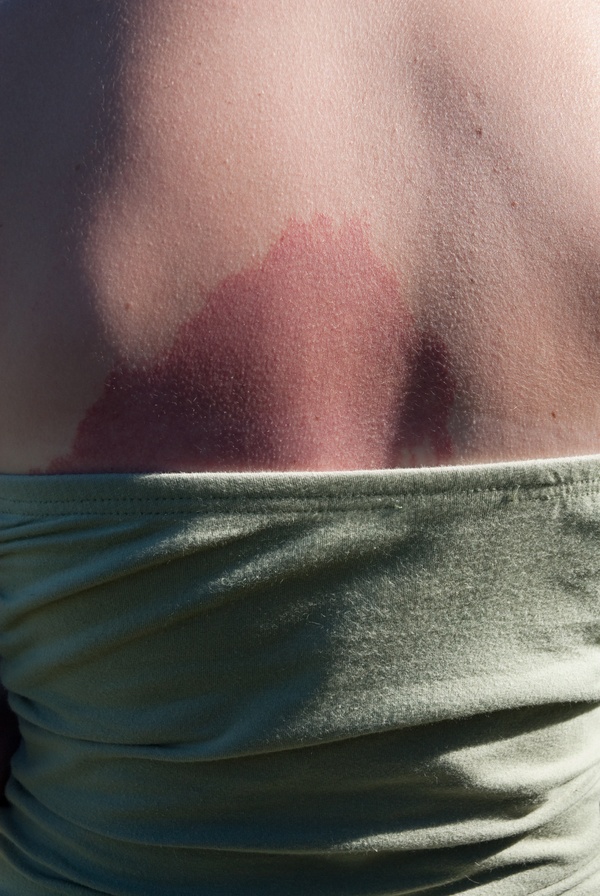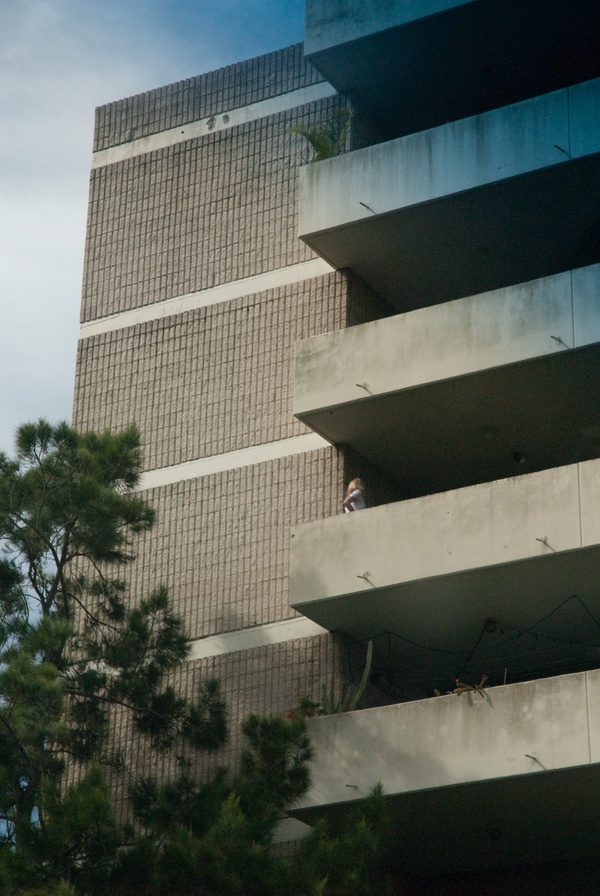reviews
2014-07-22
‘I Must Behave’ in ‘Photo HiStories’, Deidra Sullivan, July 2009

‘Photo HiStories’ : Mark Adams, Bruce Connew and John Miller at the Govett-Brewster Gallery, New Plymouth, New Zealand 13 June–30 August 2009.
I recently watched a documentary in which the late Vietnam war photographer Phillip Jones Griffiths was discussing—or defending—the practice of documentary photography. He argued, “Even if not a single picture taken is ever published, [the images] exist ... and that means we are recording the history of the human race. If that’s all you’re doing, it is still a very, very worthwhile profession to be involved in.”ii Evidently he believed passionately in documentary practice, which is encouraging to see given the intensity of the postmodern critique of documentary that has occurred over the past couple of decades. In Jones Griffiths view it is photography’s relationship with realism that is of value, and he suggests it is better to see than not see, better to record than not; better to have a history to refer back to that we can, in some sense, gain from. In our media savvy, image saturated culture, doubtless this sounds sentimental to some ears, but I can’t help agreeing with him. However, recent evaluations of documentary practice are such that no photographer would lay a claim to telling the objective ‘truth’ any more.iii History has become acknowledged as ‘histories’, a story mediated and shaped by the teller.
This is why Photo HiStories is such good food for thought. Curator Mercedes Vicente presents us with three quite different forms of engagement with the documentary tradition from photographers Bruce Connew, John Miller and Mark Adams. In the exhibition literature, Vicente acknowledges the dilemmas facing documentary photography and suggests that documentary images can no longer be understood as ‘fact’. Rather, she suggests, their meanings are mediated by the context in which they are viewed, and by notions of truth, authenticity and authorship.iv The exhibition engages with both the photographers’ concerns and these broader issues facing documentary practice.
The poetry of history lies in the quasi- miraculous fact that once, on this earth, on this familiar spot of ground, walked other men and women, as actual as we are today, thinking their own thoughts, swayed by their own passions, but now all gone.
—G.M. Trevelyan, Autobiography of an historian.
Viewing Bruce Connew’s recent work from his series ‘I Must Behave’ came as somewhat of a surprise. I hadn’t seen his 2007 publication ‘I Saw You’ and consequently the radical departure from his social realist documentary style was unexpected to say the least. I stood in the gallery space and began to piece the work together—wondering about the decision-making process that caused Connew to choose the scenes, people and objects that he did. The title helps: ‘I Must Behave’ suggests self-control and surveillance—an internal dialogue of self-observation.
But Connew’s images don’t give themselves away as easily as that. Initially I was left with a creeping sense of unease and dislocation, rather than perceiving any particular message about social control or observation. The images embody a sense of displacement, of disconnection between people (Susan Sontag’s observation about Diane Arbus’ photographs—that “Humanity is not one” springs to mind. v). We see a tire floating in a river. A running cat. Posters of missing children. Decrepit Modernist architecture. A woman’s torso, with a dramatic scar. A duck in a cage. People walking in the street. A boxing match. A forest. A woman holding a banana. Viewing these images is a little like channel surfing. John Berger once commented that a photograph is like a quote, which, removed from its context, becomes ambiguous.vi Connew’s images are just that—dozens of quotes, decontextualised. The images were made in New Zealand and multiple international locations—but more than that, I cannot identify. Sewn back together, these decontextualised quotes tell a new story of dystopia. There is no belonging in these photographs. It is not a reassuring story that Connew is telling us. This is an unsettling observation of the experience of globalisation: where we are, who we are and what we are, we can’t quite say. Perhaps the sense of anxiety and disconnection apparent in these images is also a manifestation of the personal and social controls and restrictions we submit ourselves to.

I wonder why Connew has departed from his established social documentary practice so dramatically. Maybe it is a desire to tell a new story, or explore a different set of aesthetic conventions. Perhaps the weight of traditional documentary practice with its irreconcilable ethical and epistemological dilemmas became too heavy. Ironically, I find ‘I Must Behave’ more perturbing than a lot of Connew’s socially concerned documentary photography. Yet there’s an absence of human engagement here, present in much of his previous work, that I find myself missing. We are reminded daily of the disconnectedness of contemporary society, and I wonder if ‘I Must Behave’ slips from being a comment on it, into becoming another example of it.
The homogeneity of global culture as apparent in Connew’s work is in stark contrast to the context specific stories that John Miller explores. Closer in nature to Connew’s earlier work, Miller’s photography engages with the established tradition of documentary as a form of social engagement and dissent. Miller’s work over the past four decades has focused on protest photography in relation to both national and international concerns. He has photographed many anti-war, anti-apartheid and anti-nuclear protests, and multiple Maori political demonstrations and marches. He states, “I seem to have been performing the role of a sympathetic observer, insofar as I tend to support the causes that motivate such protests, rallies or meetings.”vii This selection encompasses photographs made at Waitangi demonstrations over several decades, the 1975 Land March, images from Bastion Point, and various protests at parliament. Miller’s photographs are descriptive, detailing as much as possible about the scene he has surveyed. He often works in series or with a triptych form to widen the angle offered to the viewer. In this capacity, photography is evidential, a witness to social and historical events. Referring to his work, Miller states, “a photographic archive which extends over more than three decades has a use in reminding those of us who were there, and informing those who weren’t, of what actually transpired in previous yearsand how past events might relate to the present day.”viii Doubtless Miller would agree with Jones Griffiths, then.

Mark Adams’ work is a compelling example of photography exploring a specific story, or history, of contemporary significance. Adams’ photography engages with cross-cultural and postcolonial histories, and addresses colonial practices of collecting and archiving Maori artefacts and taonga. The photographs in Photo HiStories, a selection from the series Rauru, trace the work of Ngati Tarawhai carver Tene Waitere (1854-1931). One of Waitere’s most significant works was Rauru, a meeting house, created between 1897-1900 for a Rotorua hotel owner. It was sold in 1904 to the Museum fur Volkerkunde in Hamburg and remains there, one of three meeting houses carved or partially carved by Waitere now located outside of New Zealand.ix Waitere was the first Ngati Tarawhai artist to produce a large body of work for commercial European buyers, and Nicholas Thomas suggests the histories of these carvings, the paths they travelled and their current locations are insights into cross cultural engagements and interactions between empire and art. x The location of Rauru, the Museum fur Volkerkunde, also reminds us that while museums might be sites of knowledge and history they can also be sites of particular types of colonial histories, and significant markers of colonial heritage and practice.
Adams’ work doesn’t engage with the dramatic moment in the sense Millers’ project does. The large scale images of Rauru, the interior and exterior images of the Museum fur Volkerkunde, and Rauru’s original street location in Rotorua, are all still, quiet, and contemplative. Adams’ process and aesthetic is one that encourages a meditative response from the viewer while also inviting us to enquire further. Adams is both a historian and a photographer and his work offers a compelling argument for photography as a form of visual history.
But history in itself is problematic—how can we know the past? How can we know the ‘other men and women’, lost in the passing of time, that Trevelyan speaks of? History is a combination of received information, inherited narratives, memory, imagination and cultural interpretation, all mediated by the passing of time. If every photograph is more or less, as Berger suggests, an ambiguous decontextualised ‘quote’, is the capacity of the photograph to function as a form of history compromised? I would argue, no more than any other form of history. No history is complete, be it visual, written or oral; history is a retelling of past events and quite distinct from the past as a series of lived events. Consequently, each of the histories presented in this exhibition can be considered a departure point for further contemplation and engagement with the past, and each engages with time, history and narrative in a distinct way. Miller’s work is an archive, Connew’s an engagement with the immediate past, and Adams’ work, though photographed recently, references several temporal locations throughout the 20th and 21st centuries. Considered in unison, as with any diverse collection of photographs, they present something of a temporal medley; we journey between the present and the late 19th century. But this is the poetry of history that Trevelyan refers to, made all the more accessible through the viewing of it.
Back to Philip Jones Griffiths and his belief that documentary photography is “a very, very, worthwhile profession.” Jones Griffith’s voice is not a lone one in the wilderness; exhibitions such as Photo HiStories attest to that. Curator Mercedes Vicente observes “The failure of mainstream media to deal with current events have prompted a renewed interest in social reality and its documentary mediation.”xi Photo HiStories reminds us that it is the concerns and motivations of the photographer that shape any given project. It provides us with a rich variety of material that encourages us to consider both the specific histories explored, and the strengths and complexities of documentary practice.

NOTES:
i Trevelyan, G.W. (1949). ‘Autobiography of an historian’. In Autobiography and other essays. London: Longmans, Green. Quoted in Lowenthal, D. (1985). The past is a foreign country. Cambridge: Cambridge University Press, p.185.
ii Phillip Jones Griffiths, quoted in Kirby, T. (Series Producer). & Rodley C. (Episode Director). (2006). The genius of photography. Episode 3: Right time/ Right place. London: Wall to Wall for BBC.
iii See Sontag, S. (1978). On Photography. London: Penguin; Rosler, M. (1981) ‘In, around and afterthoughts on documentary photography.’ In Bolton, R. (Ed). (1989). The context of meaning: critical histories of photography. Cambridge, Mass: MIT Press, and Solomon-Godeau, A. (1991). ‘Who is speaking thus? Some questions on documentary photography.’ In Photography at the Dock: Essays on photographic history, institutions, and practices.' Minneapolis: University of Minnesota Press.
iv Mercedes Vicente. (2009). Photo HiStories: Mark Adams, Bruce Connew and John Miller. (Exhibition Wall label), Govett-Brewster Gallery, August 2009.
v Susan Sontag discusses Diane Arbus’ work in On Photography (1978), pp.32-33.
vi John Berger, writing in Berger, J. & Mohr, J. (1982). Another Way of Telling. New York: Vintage, pp.85-88.
vii John Miller, (2003). John Miller: Media Peace Award recipient 2003. Notes in response to an interview by Faye Norman. PhotoForum 69, December 2003. Retrieved from www.photoforum-nz.org/index.php?pageID=27, October 1 2009.
viii Ibid.
ix Nicholas Thomas, ‘Introduction’, in Thomas, N. (Ed). (2009). Rauru: Tene Waitere, Maori Carving, Colonial History. Dunedin: University of Otago Press, p.12.
x ibid.
xi Mercedes Vicente. (2009). Photo HiStories: Mark Adams, Bruce Connew and John Miller. Retrieved from www.govettbrewster.com/Exhibitions/Previous/, October 1 2009.
DEIDRA SULLIVAN / 07.2009